I think you'd be surprised of how many wild species of livebearers are kept and bred overhere. It really seems that in Western Europe there are more wild livebearer species available than in North America. Probably that's also the reason why there are many non European keepers visiting western European breeders.Someday, I am going back to the Netherlands, home of captive bred X maculatus and Platopochilus lampeye killies...
-
Guest, the Tank of the Year contest is underway!
💧 Which tank will win? 👉 View the entries and vote now!!
You are using an out of date browser. It may not display this or other websites correctly.
You should upgrade or use an alternative browser.
You should upgrade or use an alternative browser.
The Green Swordtail and other "wild" colors of livebearers.
- Thread starter Valentina
- Start date
Overall, I think the commitment to the hobby is higher in Europe. People seem to have more freedom than North Americans, when it comes to leisure and pursuing interests. In all aspects of the hobby, be it Cichlids, killies, livebearers or others, people seem to value uncommon fish enough to breed them. They aren't as reluctant to be seen taking an interest seriously.
Over here, people consume. It's a more passive, sold to hobby. With my favourite group, killifish from western Africa, I would estimate 90% of egg sellers are European. I know I can get the fish that interest me in Europe rather easily, but in North America?
There also seems to be a radical difference in information sharing. People here don't have the social approach a lot of European groups have.
There are enormous cultural and social differences, as well as generational ones at work here. The replacement of the independent store owner by corporate chains that are to fish choice as McDonald's is to food is also very big. I have stopped into chains as I've travelled, and the third tank to the right always has exactly the same fish as it did in the store before, and the one before that. It smothers curiosity when you never see anything unexpected.
The European stores I've visited often make an effort to create curiosity as part of competing for customers. I hope you don't lose that.
Over here, people consume. It's a more passive, sold to hobby. With my favourite group, killifish from western Africa, I would estimate 90% of egg sellers are European. I know I can get the fish that interest me in Europe rather easily, but in North America?
There also seems to be a radical difference in information sharing. People here don't have the social approach a lot of European groups have.
There are enormous cultural and social differences, as well as generational ones at work here. The replacement of the independent store owner by corporate chains that are to fish choice as McDonald's is to food is also very big. I have stopped into chains as I've travelled, and the third tank to the right always has exactly the same fish as it did in the store before, and the one before that. It smothers curiosity when you never see anything unexpected.
The European stores I've visited often make an effort to create curiosity as part of competing for customers. I hope you don't lose that.
It depends on the kind of livebearer species wether the behavior differs or not in comparison to fancy strains that are derived from them.Do you find their behavior and temperament differ from the highly hybridized versions we see now?
Well, here are some...Please post some pictures if you have them.
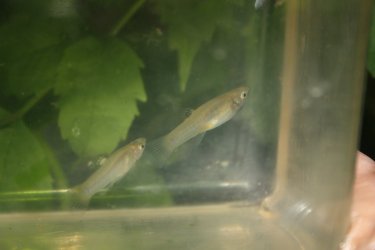 These are Poecilia caucana, a wild molly species.
These are Poecilia caucana, a wild molly species.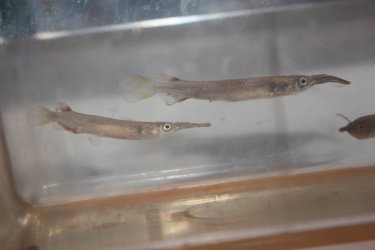 These are Dermogenys pusillus (pussila). Livebearing halfbeaks.
These are Dermogenys pusillus (pussila). Livebearing halfbeaks.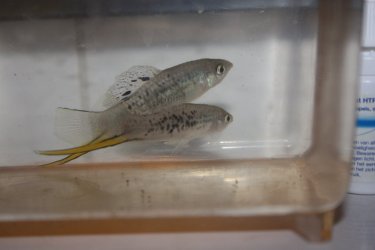 These are Xiphophorus nezahualcoyotl (wild swordtail species).
These are Xiphophorus nezahualcoyotl (wild swordtail species).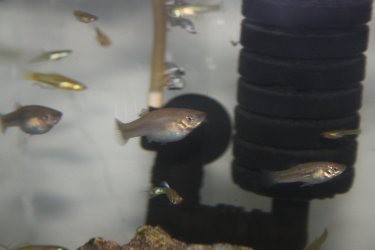 These are Poecilia chica (wild molly species).
These are Poecilia chica (wild molly species).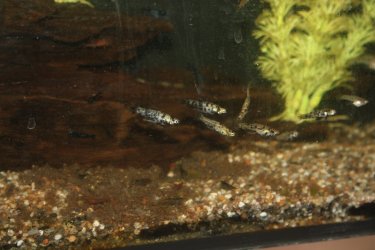 These are Phalloceros caudimaculatus reticulatus.
These are Phalloceros caudimaculatus reticulatus.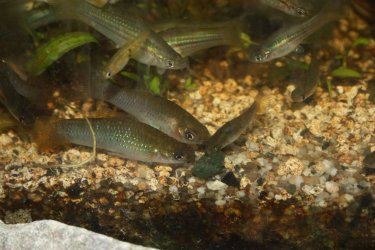 These are Poecilia mexicana (wild molly species) and Xiphophorus hellerii palenque (wild swordtail species).
These are Poecilia mexicana (wild molly species) and Xiphophorus hellerii palenque (wild swordtail species).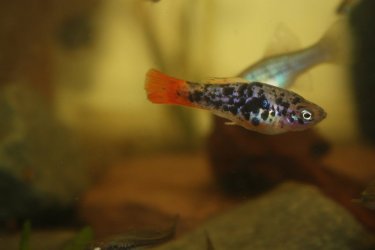 These are Xiphophorus variatus La laguna (wild platy species).
These are Xiphophorus variatus La laguna (wild platy species). These are Girardinus metallicus. On the left you'll see a leucistic male (white and black eyes). This grey variety is then only variety in the wild. The socalled black chin, yellow belly and the yellow/black belly are fancy varieties (so, man created).
These are Girardinus metallicus. On the left you'll see a leucistic male (white and black eyes). This grey variety is then only variety in the wild. The socalled black chin, yellow belly and the yellow/black belly are fancy varieties (so, man created).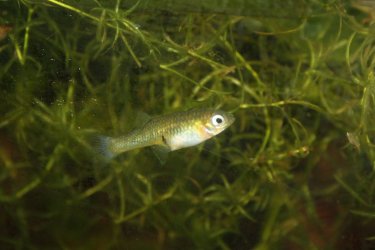 This is the Girardinus uninotatus.
This is the Girardinus uninotatus.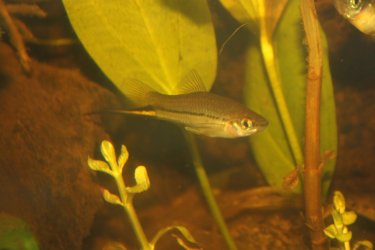 This is the Xiphophorus signum (Comma swordtail), a wild swordtail species.
This is the Xiphophorus signum (Comma swordtail), a wild swordtail species.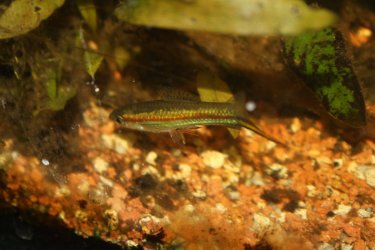 This is the xiphophorus hellerii Rio Jalapa (wild swordtail species).
This is the xiphophorus hellerii Rio Jalapa (wild swordtail species).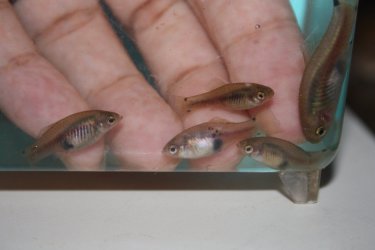 These are Xiphophorus xiphidium twin spot (wild platy species).
These are Xiphophorus xiphidium twin spot (wild platy species).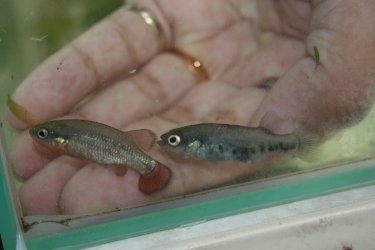 This is a Characodon audax (small goodeid species).
This is a Characodon audax (small goodeid species).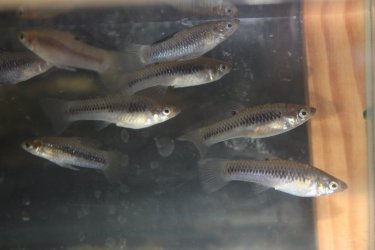 These are Limia perugia.
These are Limia perugia.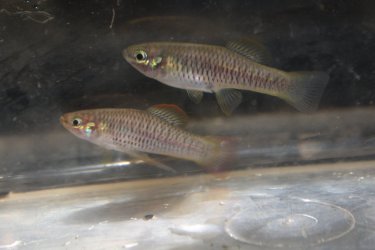 These are Priapichthys annectens.
These are Priapichthys annectens.@GaryE You say it smothers curiosity when you never see anything unexpected. True dat. Years ago we had several Mom and Pop pet shops in my town and I would take the tour of them regularly just to see what may have popped up in their tanks. There was always something unexpected. You had to have a couple bucks in your pocket and an empty tank at home or you would get skunked. Oh for those days just one more time and this time I wouldn't fritter it away.
Next batch of wild livebearer species:
 This is the genuine Phalloceros caudimaculatus (so, not reticulatus nor auratus).
This is the genuine Phalloceros caudimaculatus (so, not reticulatus nor auratus).
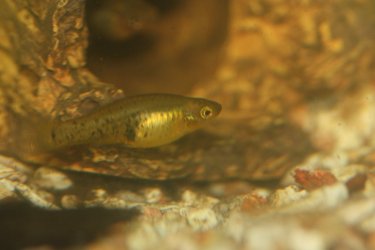 This is the Xiphophorus milleri (wild platy species). Also known as Catemaco platy.
This is the Xiphophorus milleri (wild platy species). Also known as Catemaco platy.
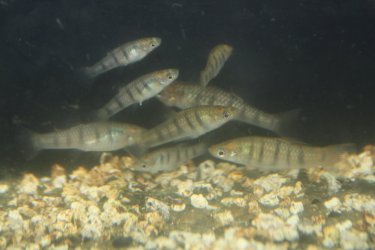 These are Tiger Limia (Limia islai).
These are Tiger Limia (Limia islai).
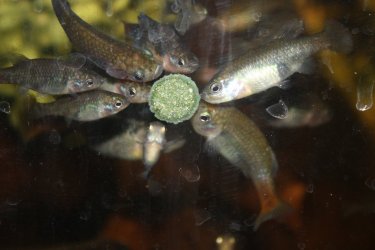 These are Xenotoca doadrioi (formerly known as Xenotoca eisini, San Marcos).
These are Xenotoca doadrioi (formerly known as Xenotoca eisini, San Marcos).
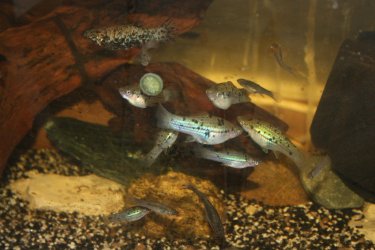 These are Xiphophorus hellerii Rio papaloapan. They look a bit similar to Xiphophorus hellerii Guentheri.
These are Xiphophorus hellerii Rio papaloapan. They look a bit similar to Xiphophorus hellerii Guentheri.
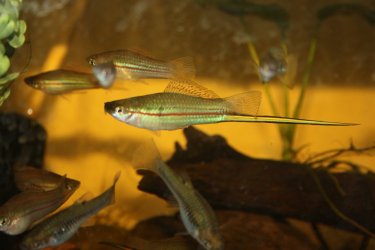 These are Xiphophorus alvarezi (wild swordtail species). Some males will be covered with some red from the bottom part of the body (just like Xiphophorus yucatan). The ones you see right here are late male which are bigger in size.
These are Xiphophorus alvarezi (wild swordtail species). Some males will be covered with some red from the bottom part of the body (just like Xiphophorus yucatan). The ones you see right here are late male which are bigger in size.
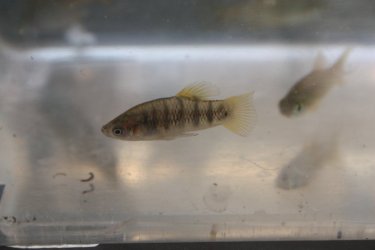 These are Limia nigrofasciata.
These are Limia nigrofasciata.
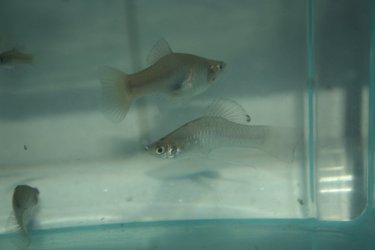 These are Phallichthys pittieri.
These are Phallichthys pittieri.
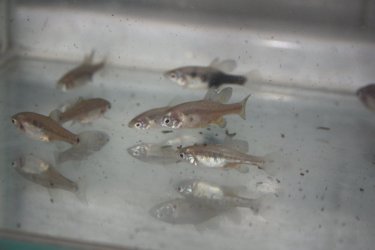 These are Skiffia multipunctata (Goodeid species).
These are Skiffia multipunctata (Goodeid species).
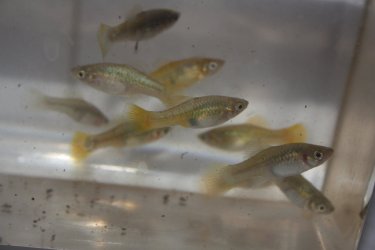 These are Xiphophorus variatus Puente escalanar (wild platy species).
These are Xiphophorus variatus Puente escalanar (wild platy species).
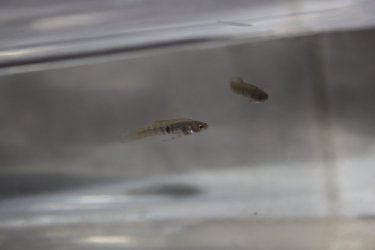 These are Neoheterandria elegans.
These are Neoheterandria elegans.
 These are Poeciliopsis gracilis (Porthole livebearer).
These are Poeciliopsis gracilis (Porthole livebearer).
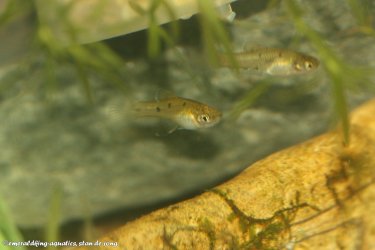 These are Phallichthys quadripunctatus.
These are Phallichthys quadripunctatus.
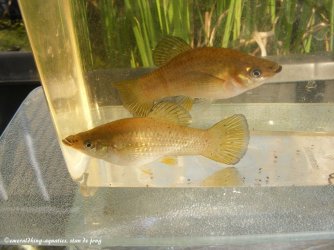 These are Poecilia formosa (Amazon molly). This species consists only of females.
These are Poecilia formosa (Amazon molly). This species consists only of females.
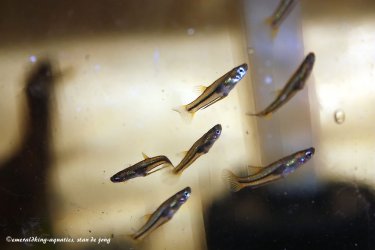 These are Poeciliopsis profilica.
These are Poeciliopsis profilica.
 This is the genuine Phalloceros caudimaculatus (so, not reticulatus nor auratus).
This is the genuine Phalloceros caudimaculatus (so, not reticulatus nor auratus). This is the Xiphophorus milleri (wild platy species). Also known as Catemaco platy.
This is the Xiphophorus milleri (wild platy species). Also known as Catemaco platy. These are Tiger Limia (Limia islai).
These are Tiger Limia (Limia islai). These are Xenotoca doadrioi (formerly known as Xenotoca eisini, San Marcos).
These are Xenotoca doadrioi (formerly known as Xenotoca eisini, San Marcos). These are Xiphophorus hellerii Rio papaloapan. They look a bit similar to Xiphophorus hellerii Guentheri.
These are Xiphophorus hellerii Rio papaloapan. They look a bit similar to Xiphophorus hellerii Guentheri. These are Xiphophorus alvarezi (wild swordtail species). Some males will be covered with some red from the bottom part of the body (just like Xiphophorus yucatan). The ones you see right here are late male which are bigger in size.
These are Xiphophorus alvarezi (wild swordtail species). Some males will be covered with some red from the bottom part of the body (just like Xiphophorus yucatan). The ones you see right here are late male which are bigger in size. These are Limia nigrofasciata.
These are Limia nigrofasciata. These are Phallichthys pittieri.
These are Phallichthys pittieri. These are Skiffia multipunctata (Goodeid species).
These are Skiffia multipunctata (Goodeid species). These are Xiphophorus variatus Puente escalanar (wild platy species).
These are Xiphophorus variatus Puente escalanar (wild platy species). These are Neoheterandria elegans.
These are Neoheterandria elegans. These are Poeciliopsis gracilis (Porthole livebearer).
These are Poeciliopsis gracilis (Porthole livebearer). These are Phallichthys quadripunctatus.
These are Phallichthys quadripunctatus. These are Poecilia formosa (Amazon molly). This species consists only of females.
These are Poecilia formosa (Amazon molly). This species consists only of females. These are Poeciliopsis profilica.
These are Poeciliopsis profilica.Following batch of wild livebearers:
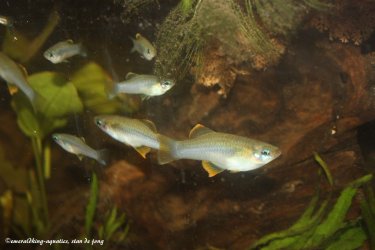 These are Priapella olmecae.
These are Priapella olmecae.
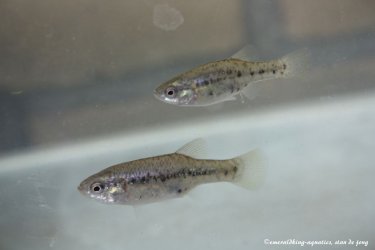 These are Xenotoca variata, Jesus Maria (Goodeid species).
These are Xenotoca variata, Jesus Maria (Goodeid species).
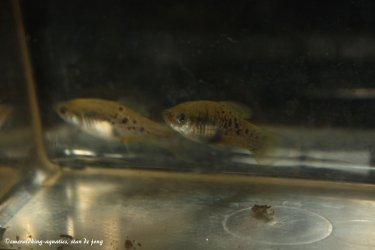 These are Xiphophorus evelynae (wild platy species).
These are Xiphophorus evelynae (wild platy species).
 These are Xiphophorus kallmani (wild swordtail species).
These are Xiphophorus kallmani (wild swordtail species).
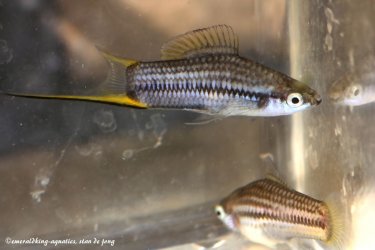 These are Xiphophorus multiradiatus (wild swordtail species).
These are Xiphophorus multiradiatus (wild swordtail species).
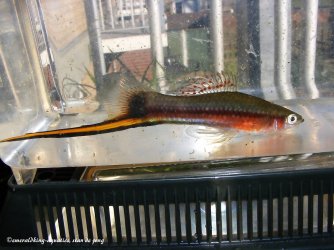 This is a Xiphophorus yucatan (wild swordtail species).
This is a Xiphophorus yucatan (wild swordtail species).
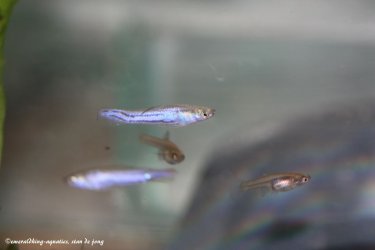 These are Micropoecilia parae (blue variety).
These are Micropoecilia parae (blue variety).
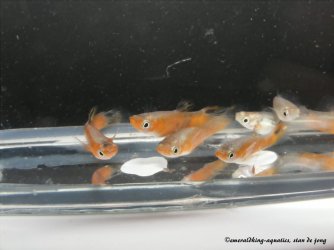 These are Micropoecilia picta (swamp guppy). They come in multiple colors in the wild.
These are Micropoecilia picta (swamp guppy). They come in multiple colors in the wild.
 Poecilia salvatoris (wild molly species).
Poecilia salvatoris (wild molly species).
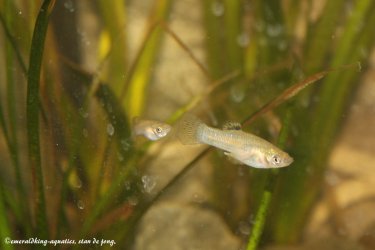 These are Poecilia Vanderpolli (wild molly species).
These are Poecilia Vanderpolli (wild molly species).
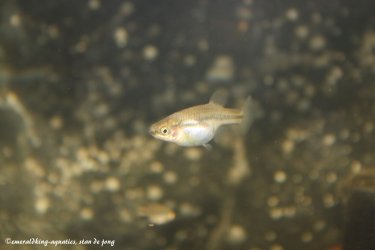 This is a female Xenotoca bilineata (goodeid species).
This is a female Xenotoca bilineata (goodeid species).
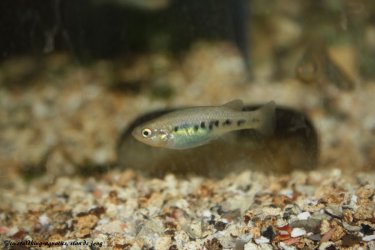 This is a Characodon lateralis (green variety for there's also a red variety in the wild).
This is a Characodon lateralis (green variety for there's also a red variety in the wild).
 These are Limia tridens (Cuban limia).
These are Limia tridens (Cuban limia).
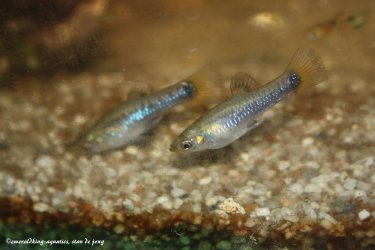 These are Limia melanogaster.
These are Limia melanogaster.
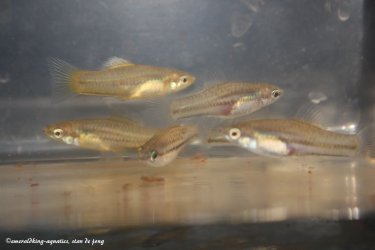 These are Xiphophorus pygmaeus (wild swordtail strain).
These are Xiphophorus pygmaeus (wild swordtail strain).
 These are Priapella olmecae.
These are Priapella olmecae. These are Xenotoca variata, Jesus Maria (Goodeid species).
These are Xenotoca variata, Jesus Maria (Goodeid species). These are Xiphophorus evelynae (wild platy species).
These are Xiphophorus evelynae (wild platy species). These are Xiphophorus kallmani (wild swordtail species).
These are Xiphophorus kallmani (wild swordtail species). These are Xiphophorus multiradiatus (wild swordtail species).
These are Xiphophorus multiradiatus (wild swordtail species). This is a Xiphophorus yucatan (wild swordtail species).
This is a Xiphophorus yucatan (wild swordtail species). These are Micropoecilia parae (blue variety).
These are Micropoecilia parae (blue variety). These are Micropoecilia picta (swamp guppy). They come in multiple colors in the wild.
These are Micropoecilia picta (swamp guppy). They come in multiple colors in the wild. Poecilia salvatoris (wild molly species).
Poecilia salvatoris (wild molly species). These are Poecilia Vanderpolli (wild molly species).
These are Poecilia Vanderpolli (wild molly species). This is a female Xenotoca bilineata (goodeid species).
This is a female Xenotoca bilineata (goodeid species). This is a Characodon lateralis (green variety for there's also a red variety in the wild).
This is a Characodon lateralis (green variety for there's also a red variety in the wild). These are Limia tridens (Cuban limia).
These are Limia tridens (Cuban limia). These are Limia melanogaster.
These are Limia melanogaster. These are Xiphophorus pygmaeus (wild swordtail strain).
These are Xiphophorus pygmaeus (wild swordtail strain).Uberhoust
Fish Herder
@emeraldking are all those live bearers from your collections. They are pretty impressive.
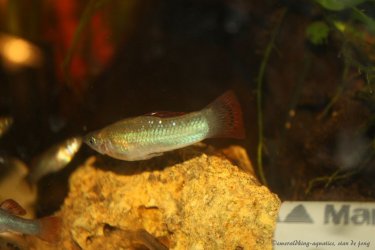 This the Poecilia gilli (wild molly species).
This the Poecilia gilli (wild molly species).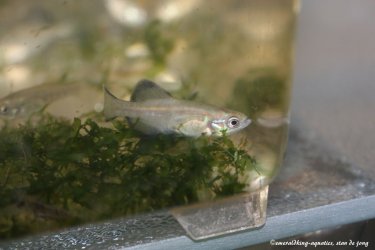 This is a Girardinichthys viviparus (Goodeid species).
This is a Girardinichthys viviparus (Goodeid species).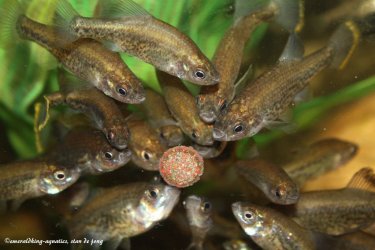 These are Chapalichthys pardalis (Plokadot splitfin. This is a goodeid species.
These are Chapalichthys pardalis (Plokadot splitfin. This is a goodeid species.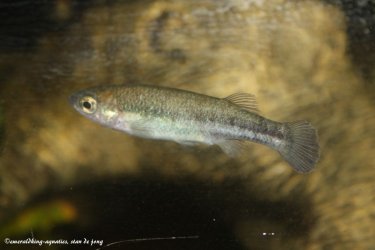 This is a Ataeniobius toweri (bluetail splitfin). This is a goodeid species.
This is a Ataeniobius toweri (bluetail splitfin). This is a goodeid species. These are the Priapella intermedia.
These are the Priapella intermedia. Xiphophorus variatus (green wildtype). This is a wild platy species.
Xiphophorus variatus (green wildtype). This is a wild platy species.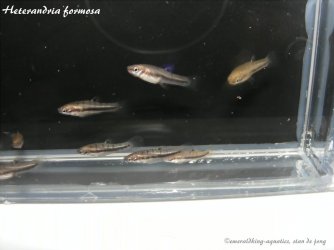 These are Heterandria formosa (Least killifish).
These are Heterandria formosa (Least killifish).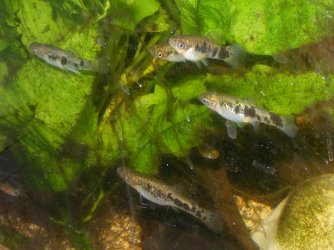 These are Limia vittata.
These are Limia vittata.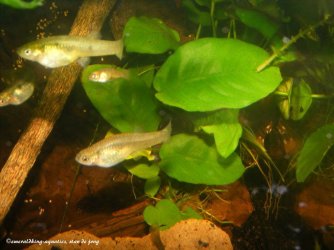 These are Poeciliopsis baenschi.
These are Poeciliopsis baenschi.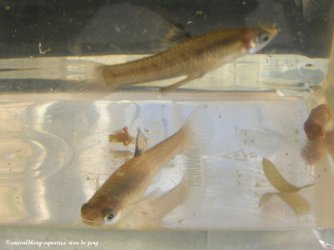 These are Xenophallus umbratilis.
These are Xenophallus umbratilis.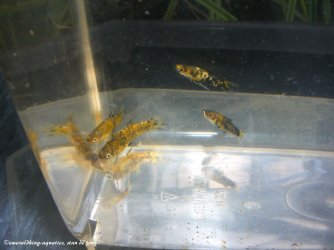 These are Phalloceros caudimaculatus auratus.
These are Phalloceros caudimaculatus auratus.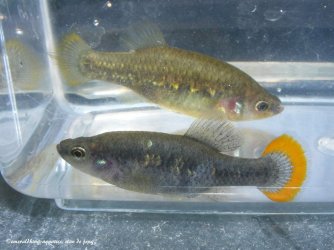 These are Zoogoneticus tequila (Goodeid species).
These are Zoogoneticus tequila (Goodeid species).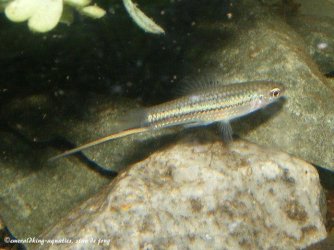 This one of phenotypes of the Xiphophorus montezumae (wild swordtail species).
This one of phenotypes of the Xiphophorus montezumae (wild swordtail species). These are Xiphophorus continens (wild swordtail species).
These are Xiphophorus continens (wild swordtail species).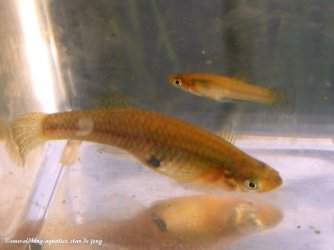 These are Gambusia affinis.
These are Gambusia affinis.Next one...
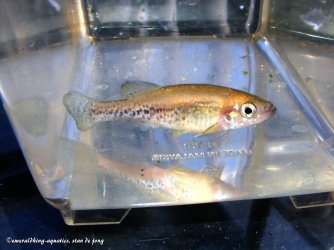 This is a Ilyodon xantusi (Goodeid species).
This is a Ilyodon xantusi (Goodeid species).
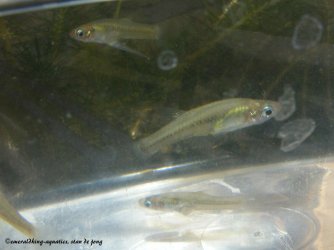 These are Girardinus falcatus.
These are Girardinus falcatus.
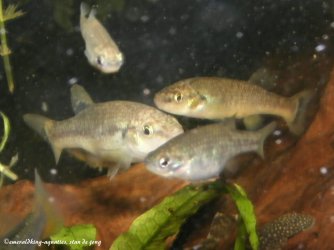 These are Allodontichthys tamazulae (goodeid species).
These are Allodontichthys tamazulae (goodeid species).
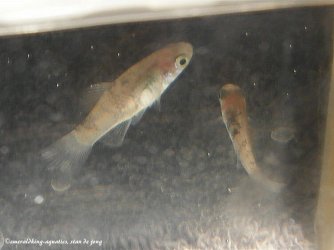 These Xiphophorus maculatus Rio papaloapan (wild platy species).
These Xiphophorus maculatus Rio papaloapan (wild platy species).
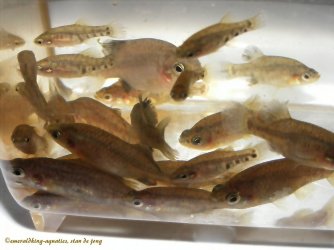 These are Zoogoneticus purhepechus (Goodeid species).
These are Zoogoneticus purhepechus (Goodeid species).
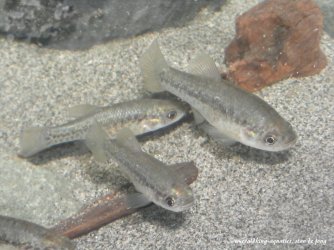 These are Alloophorus robustus (Goodeid species).
These are Alloophorus robustus (Goodeid species).
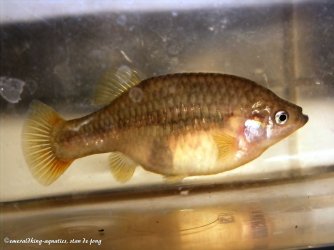 This is a female Xenotoca eisini (Goodeid species).
This is a female Xenotoca eisini (Goodeid species).
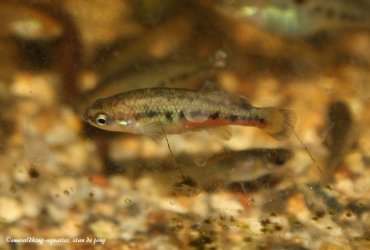 This is a Characodon lateralis (red variety). This is a Goodeid species.
This is a Characodon lateralis (red variety). This is a Goodeid species.
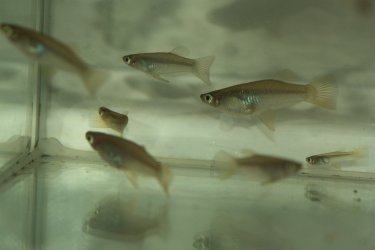 These are Alfaro cultratus (Knife livebearer).
These are Alfaro cultratus (Knife livebearer).
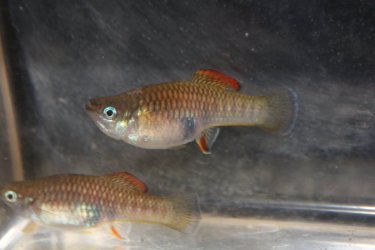 These are Brachyrhaphis roseni.
These are Brachyrhaphis roseni.
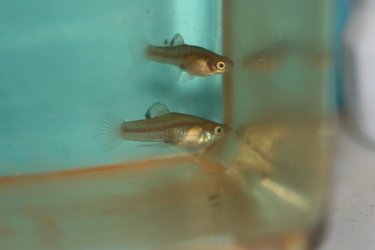 These are Phallichthys tico.
These are Phallichthys tico.
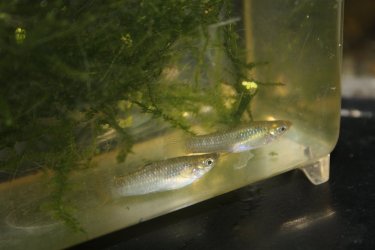 These are Poecilia cuneata (wild molly species).
These are Poecilia cuneata (wild molly species).
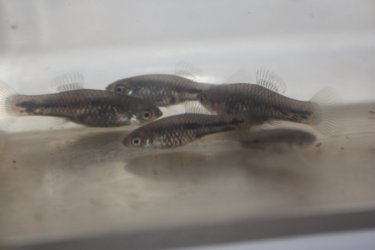 These are Xiphophorus meyeri (wild platy species).
These are Xiphophorus meyeri (wild platy species).
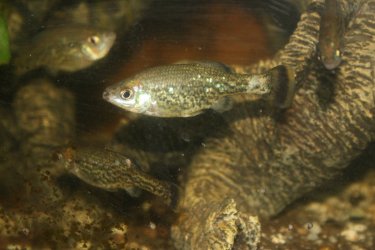 These are Ameca splendens (Butterfly splifin). This is a Goodeid species.
These are Ameca splendens (Butterfly splifin). This is a Goodeid species.
Of course, there are way more livebearer species in the wild than these. So, don't think that when we speak about livebearers that there are only guppies, mollies, swordtails and platies.
And of course, I've got also a serious number of fancy breeds of livebearers at home.
 This is a Ilyodon xantusi (Goodeid species).
This is a Ilyodon xantusi (Goodeid species). These are Girardinus falcatus.
These are Girardinus falcatus. These are Allodontichthys tamazulae (goodeid species).
These are Allodontichthys tamazulae (goodeid species). These Xiphophorus maculatus Rio papaloapan (wild platy species).
These Xiphophorus maculatus Rio papaloapan (wild platy species). These are Zoogoneticus purhepechus (Goodeid species).
These are Zoogoneticus purhepechus (Goodeid species). These are Alloophorus robustus (Goodeid species).
These are Alloophorus robustus (Goodeid species). This is a female Xenotoca eisini (Goodeid species).
This is a female Xenotoca eisini (Goodeid species). This is a Characodon lateralis (red variety). This is a Goodeid species.
This is a Characodon lateralis (red variety). This is a Goodeid species. These are Alfaro cultratus (Knife livebearer).
These are Alfaro cultratus (Knife livebearer). These are Brachyrhaphis roseni.
These are Brachyrhaphis roseni. These are Phallichthys tico.
These are Phallichthys tico. These are Poecilia cuneata (wild molly species).
These are Poecilia cuneata (wild molly species). These are Xiphophorus meyeri (wild platy species).
These are Xiphophorus meyeri (wild platy species). These are Ameca splendens (Butterfly splifin). This is a Goodeid species.
These are Ameca splendens (Butterfly splifin). This is a Goodeid species.Of course, there are way more livebearer species in the wild than these. So, don't think that when we speak about livebearers that there are only guppies, mollies, swordtails and platies.
And of course, I've got also a serious number of fancy breeds of livebearers at home.
Yes, they are...@emeraldking are all those live bearers from your collections. They are pretty impressive.
I had green swords when I was a kid, no idea where we got them but I have to imagine it was at a pet store. Those buggers multiplied like crazy. Think we had a 30 or 50 gal tank and had to get rid of them by the dozen. I loved them, they are why I have the assorted swords I have now.
Similar threads
- Replies
- 12
- Views
- 681
- Replies
- 19
- Views
- 7K
Most reactions
-
 341
341 -
 148
148 -
 143
143 -
 141
141 -
 130
130 -
 126
126 -
 122
122 -
 108
108 -
 73
73 -
 68
68 -
 61
61 -
 58
58 -
 53
53 -
 50
50 -
F
46

